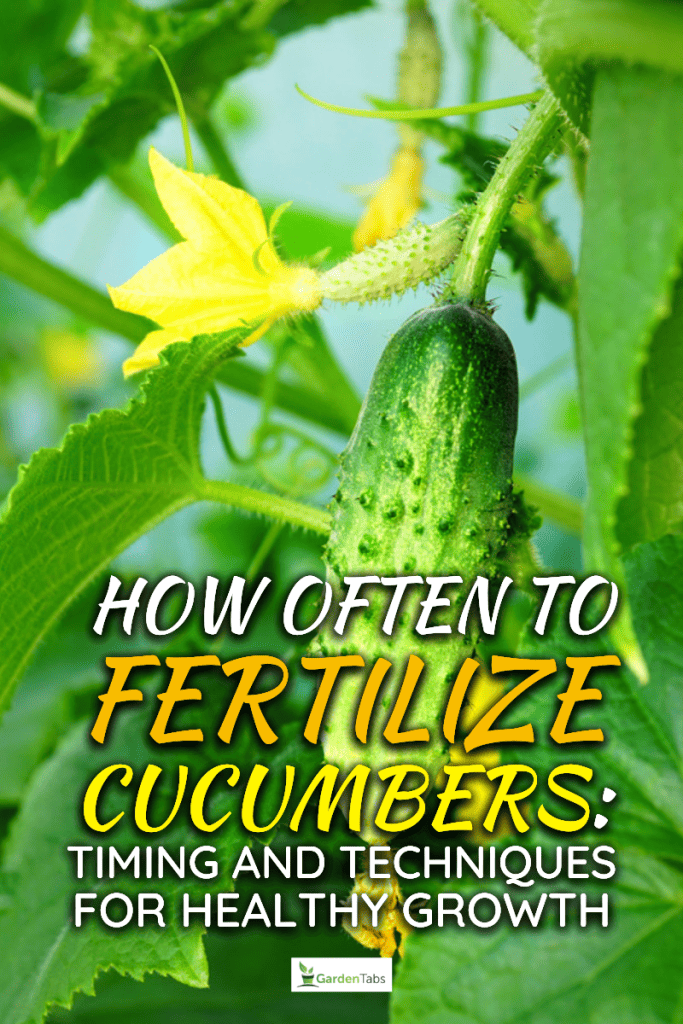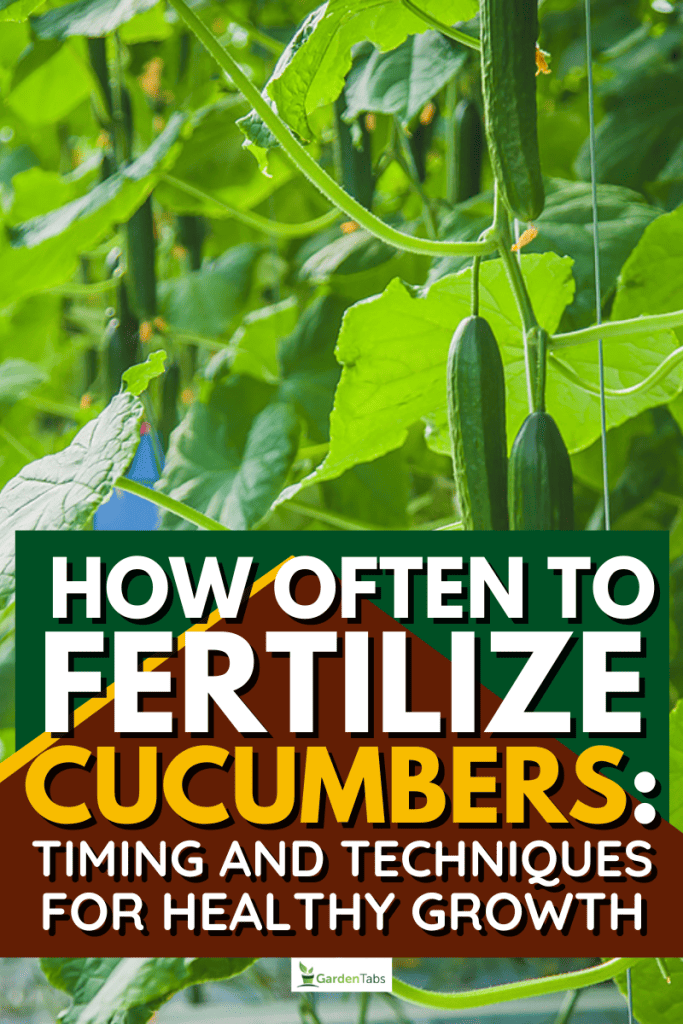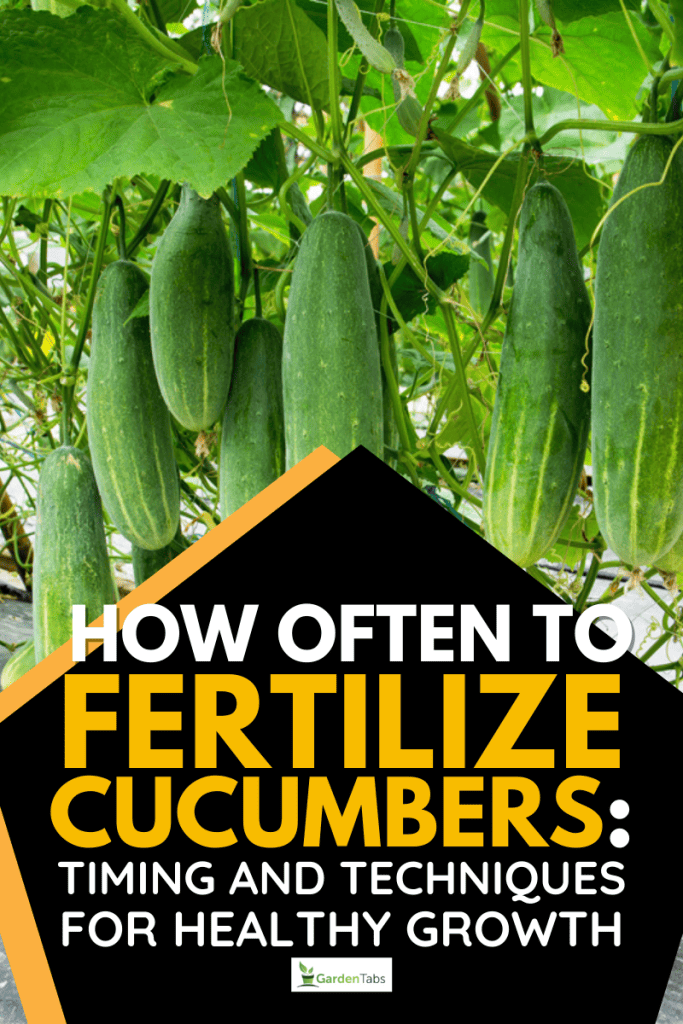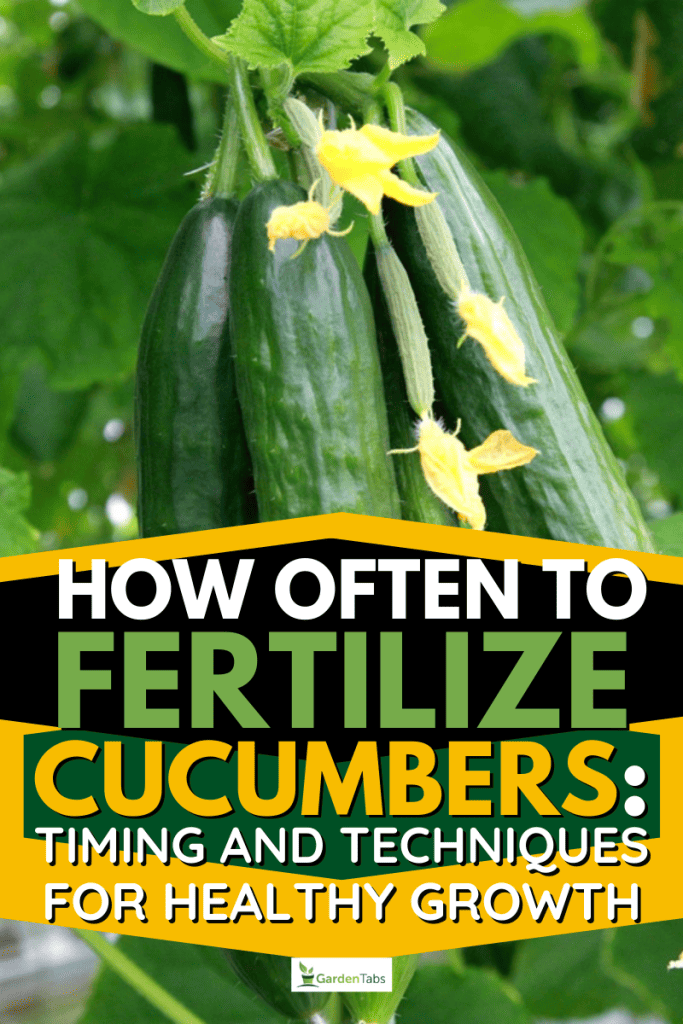Are you ready to enrich your green thumb by learning the ins and outs of fertilizers and growing the tastiest and crunchiest cucumbers?
Providing your cucumbers with the right amount of nutrients at the appropriate times is crucial for a juicy and delicious yield.
When it comes to fertilizing cucumbers, there are generally three key stages:
- while planting
- during mulching around the plant
- applying liquid fertilizer at 2-week intervals when the plant starts growing
By following this fertilization schedule, you'll ensure that your cucumber plants receive the essential nutrients they need to thrive and produce an abundant harvest.
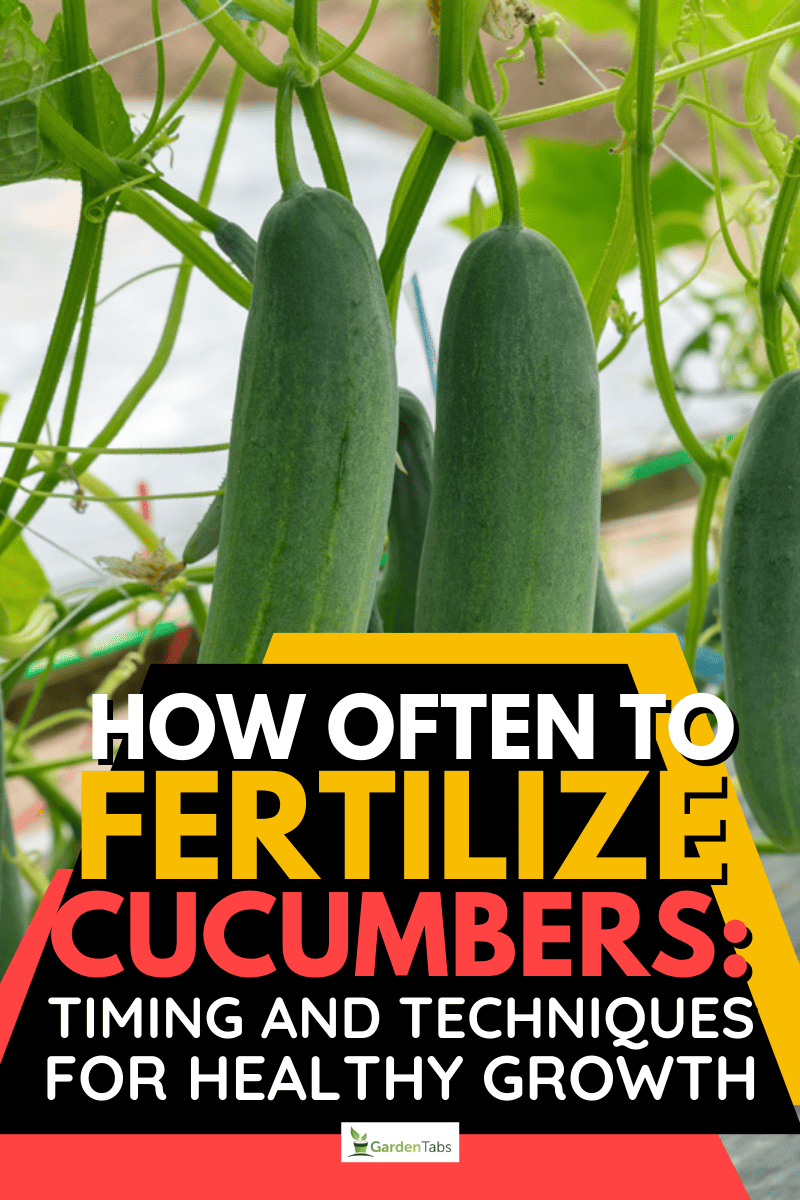
How to Grow Healthy Cucumbers
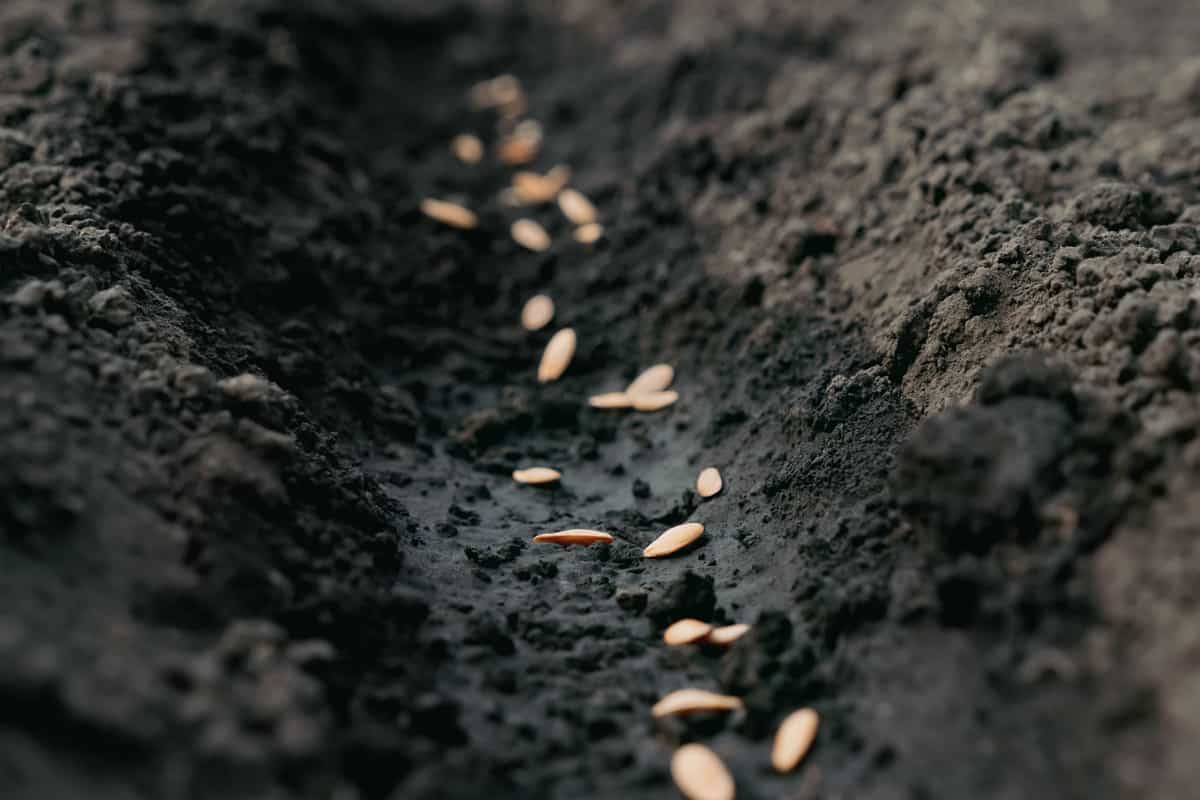
Growing healthy cucumbers is easier than you might think, but it takes a bit of know-how and a lot of TLC.
Here's a quick guide to having healthy cucumbers.
Plant Growth Requirements
Choose a sunny location for planting cucumbers, as they love at least 6-8 hours of sunlight daily.
Additionally, well-draining soil with a pH range of 6.0-6.5 is ideal for their growth.
Fertilize cucumber plants with a 10-10-10 NPK ratio or a 20-20-20 liquid fertilizer every two weeks to promote healthy growth.
Plant seeds 2-3 weeks before the last frost using a high-quality potting mix.
How Much Water Do They Need?
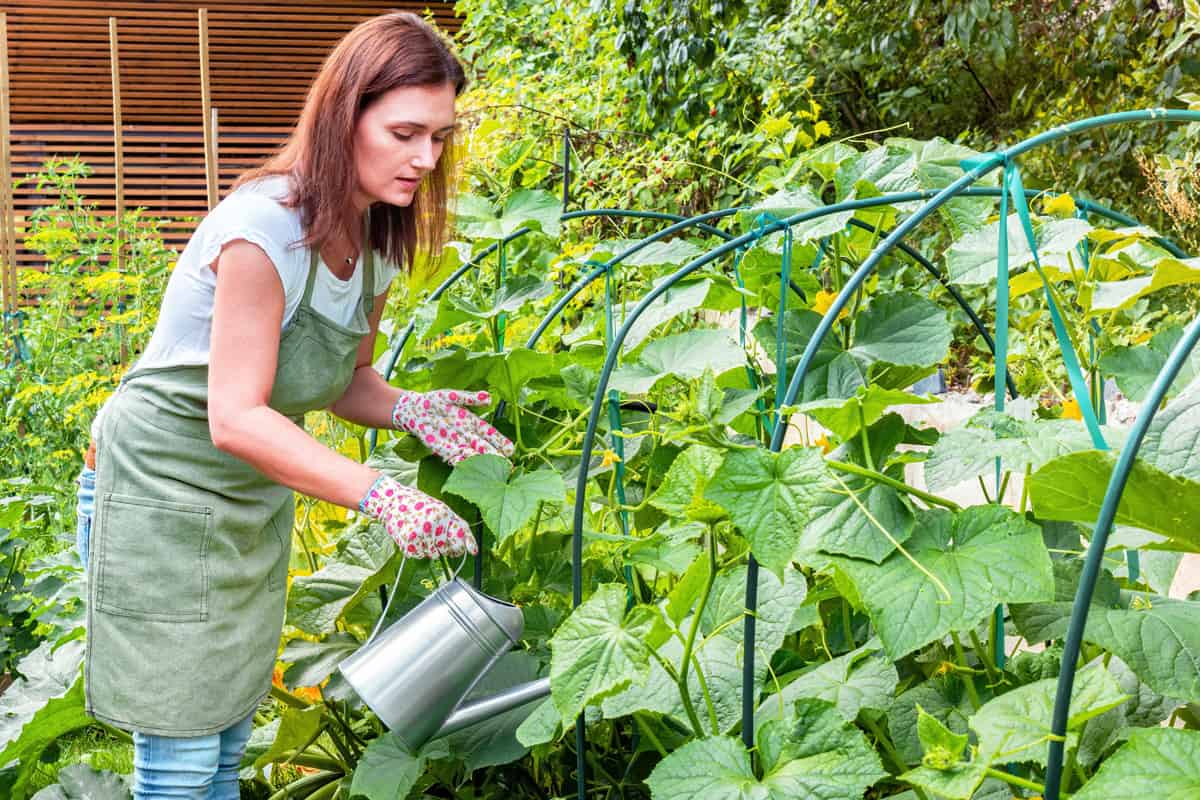
Consistent watering is crucial for cucumber plants, as they require about 1-1.5 inches of water per week.
For the best results, maintain a consistent watering schedule and avoid overwatering, which can lead to root rot.
Consider using a drip irrigation system or soaker hose to deliver water directly to the root zone. This method ensures that the plant receives enough moisture while reducing the risk of waterborne diseases on plant leaves.
However, there are those who oppose this method because it doesn't suit all types of plants. You can read more about it here: The Plant Parenting Secret: Why Scheduling Watering Is a No-No!
A Short Overview of Fertilizers
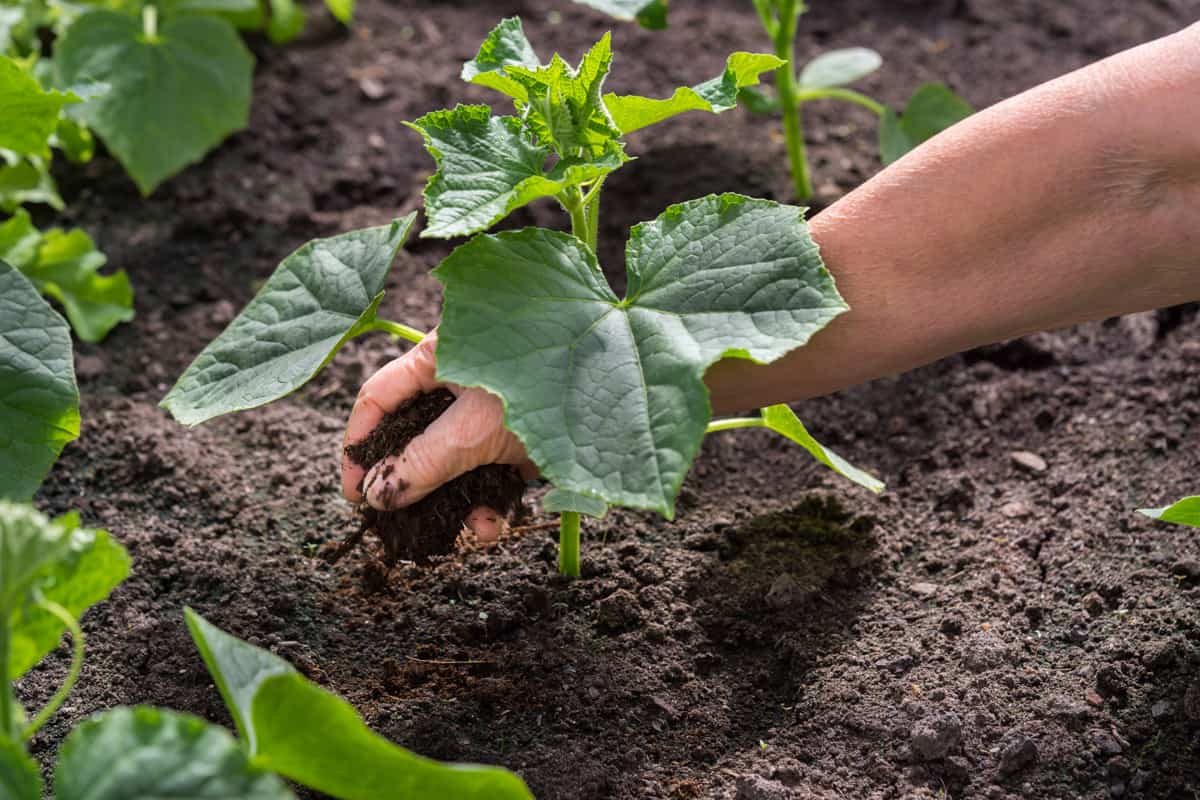
When growing cucumbers, fertilizing is essential to promote plant growth and ensure a healthy harvest.
In this overview, you'll learn about different types of fertilizers, nutrient ratios, and the differences between organic and synthetic options.
Types of Fertilizers
Fertilizers come in various forms, such as granular, liquid, and slow-release.
Granular fertilizers are applied around the base of your plant, while liquid fertilizers can be absorbed through both the leaves and roots.
Slow-release fertilizers provide nutrients over an extended period, making them a low-maintenance choice.
Consider your gardening needs and preferences when choosing the best fertilizer for your cucumber plants.
Nutrient Ratios
Fertilizers contain three essential nutrients: nitrogen (N), phosphorus (P), and potassium (K).
These nutrients are represented by a ratio, such as 10-10-10, which indicates the percentage of each nutrient.
For cucumbers, a well-balanced fertilizer with equal parts of N, P, and K is recommended.
Adjustments can be made based on soil tests or specific plant needs to ensure optimal growth.
Organic vs. Synthetic
Organic fertilizers are derived from natural sources like compost, manure, or bone meal.
They release nutrients slowly, improving the soil structure and providing long-term benefits to your plants.
Synthetic fertilizers are manufactured chemically and provide nutrients quickly, making them efficient for immediate needs.
However, excessive use of synthetic fertilizers can lead to environmental issues and negatively impact your plants' health.
How Often to Fertilize Cucumbers
Cucumbers require regular fertilization to grow and produce their best yields.
Growth Stage Considerations
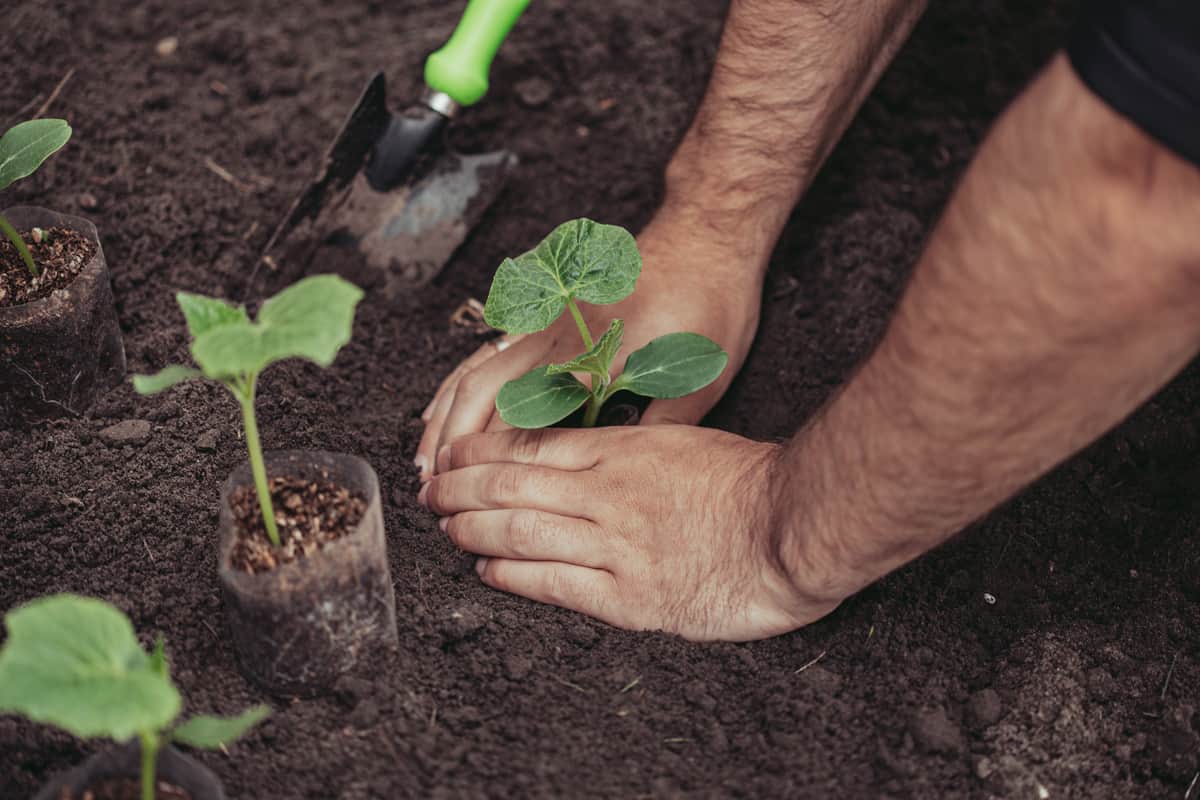
Usually, you need to fertilize cucumbers at three different stages.
First, apply a slow-release fertilizer, such as a 5-10-10 fertilizer, before planting to ensure a continuous supply of nutrients.


You can get the Master Nursery 5-10-10 on Amazon.
Secondly, fertilize during mulching around the plant, to provide extra support during growth.
Lastly, switch to a liquid fertilizer every two weeks once the plant starts growing.
For the best results, maintain a consistent fertilization schedule.
Once your cucumber plants are established, use a light dose of liquid organic fertilizer every two weeks for a total of an 8-week period (4 applications).
An established plant refers to 7 to 10 days of adjustment after transplanting or allowing the roots to settle in the soil.
Environmental Factors
Environmental factors like soil quality and temperature can impact the fertilizer requirements for your cucumber plants.
To grow cucumbers successfully, incorporate organic matter and a complete fertilizer into well-drained soil.
Monitor the temperature and ensure that the soil reaches at least 65°F before planting.
By considering these factors and adjusting your fertilization routine accordingly, you can maximize the growth and yield of your cucumber plants.
Fertilizing Techniques for Proper Application
Discover helpful tips to ensure your cucumbers receive optimal nutrients for a fruitful harvest.
How To Apply Fertilizers
Begin by fertilizing your cucumber plants at three different stages: planting, mulching, and at 2-week intervals after the plant starts growing.
Incorporate a slow-release fertilizer, such as a 5-10-10 mix, into the soil before planting for a continuous supply of nutrients. When mulching around your cucumber plants, apply a light layer of fertilizer.
Lastly, provide a liquid fertilizer to your plants at 2-week intervals during their growth.
Proper Dilution and Mixing
To avoid damaging your plants, always follow the manufacturer's recommendations on your chosen fertilizer's packaging for proper dilution rates.
Mixing fertilizer concentrations that are too strong can harm your cucumbers. Utilize a calibrated measuring tool to ensure accurate fertilizer dilution measurements.
This will guarantee that your plants receive the right amount of nutrients for healthy growth and maximum yield.
Are You Overfertilizing Your Cucumbers? Here are the Common Signs
Overfertilizing your cucumbers can create problems for your plants' health and production.
Recognizing the common signs of overfertilization allows you to adjust your feeding routine for better growth.
Yellow Leaves
When you overfeed your cucumbers, the leaves may start to turn yellow or brown. This is often due to excessive nitrogen or other nutrient imbalances in the soil.
To address this issue, reduce your cucumber fertilizing frequency or change to a balanced fertilizer. Be watchful of the leaves' condition to know when they need more fertilizer.
Reduced Fruit and Blossom Production
Too much fertilizer may cause excessive foliage growth, resulting in little to no flower or fruit production. Other factors like pollination or insufficient light may also contribute to this problem.
If you suspect overfertilization, you can apply liquid organic fertilizer every two weeks for an 8-week period. This will help the plant produce better-quality cucumbers.
Apply Fertilizer Regularly for a Bountiful Cucumber Harvest
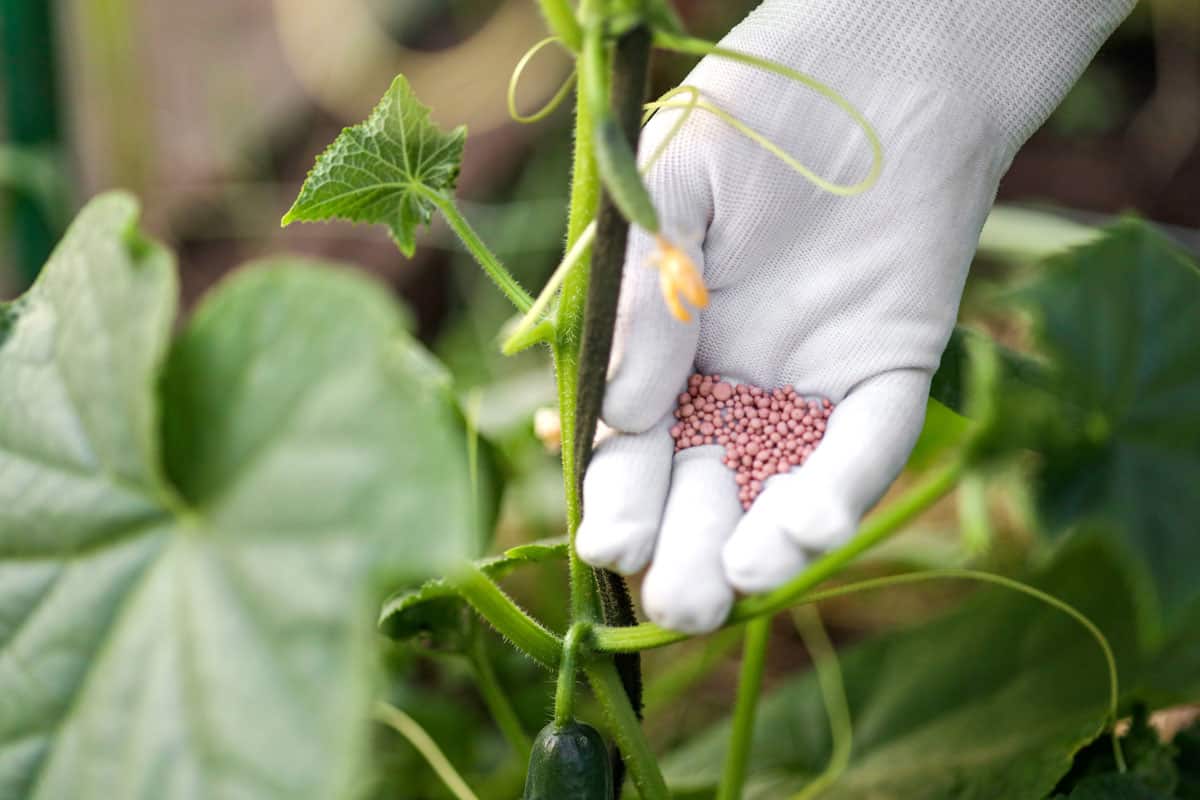
Remember that cucumbers need consistent moisture and regular fertilization for an abundant harvest. You should water your plants deeply once or twice a week depending on the weather and soil conditions.
Additionally, apply a balanced or vegetable-specific fertilizer every 2-3 weeks throughout the growing season.
Thank you for reading all the way through. If you need more information on growing your cucumbers, check out these other helpful articles below:

